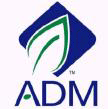 The American Coalition For Ethanol just released a study on the how well vehicles operate on an ethanol fuel blend.
The American Coalition For Ethanol just released a study on the how well vehicles operate on an ethanol fuel blend.
The American Coalition for Ethanol (ACE) released the results of its recent Fuel Economy Study, a pilot study that researched the fuel economy, cost per mile, and driveability of various blends of fuel, including unleaded gasoline, E10, E20, and E30.
“As ethanol production and use continues to expand from coast to coast, increased public discussion and media attention have often turned to a debate over ethanol’s fuel efficiency,” said Ron Lamberty, ACE Vice President / Market Development. “Because there was very little scientific information out there, ACE commissioned a pilot study to determine whether there are variances in gas mileage between ethanol blends and gasoline.”
The research tested unleaded gasoline, a 10% ethanol blend (E10), a 20% ethanol blend (E20), and a 30% ethanol blend (E30) in three late-model vehicles. The Chevrolet Impala, Ford Taurus, and Toyota Camry were not flexible fuel vehicles, and no modifications were made to them for this research. Care was taken to eliminate any human inputs that might render the tests unscientific, including the use of a computerized data logger and strict controls on the vehicles, fuel, and terrain.
Summary results:
Miles per gallon
The three vehicles averaged only 1.5% lower mileage with E10, 2.2% lower mileage with E20, 5.1% lower mileage with E30, and increased mileage of 1.7% when using the specially denatured E10 blend.
Cost per mile
Although the MPG of ethanol blends was slightly lower than the unleaded, the cost per mile of operation was generally lower. Also, the higher the concentrations of ethanol, the lower the cost per mile. Using the study’s average MPG, E10 is less expensive per mile than unleaded until ethanol’s cost is nearly 30 cents above unleaded. On a $20 bill, drivers can travel up to 15 miles farther on ethanol-blended fuel than on straight unleaded.
Driveability
Contrary to statements commonly made by vehicle manufacturers and technicians, no warning lights were displayed at any time while operating on any of the fuel blends. The data logger used for the research monitored all systems and detected no malfunction indicator lights (MIL), diagnostic trouble code lights (DTC), or emissions DTCs.
Full Study


 In just a few short months the
In just a few short months the 
 It’s off to Watkins Glen tomorrow for the
It’s off to Watkins Glen tomorrow for the  You’ve really got to sit up and take notice when a company like
You’ve really got to sit up and take notice when a company like  I know we’re all about “domestic” fuel here so all I’m trying to do is show you that this is big time stuff. I think the regular media sometimes tries to make people think this ethanol thing is just something dreamed up by a bunch of corn farmers. Not!
I know we’re all about “domestic” fuel here so all I’m trying to do is show you that this is big time stuff. I think the regular media sometimes tries to make people think this ethanol thing is just something dreamed up by a bunch of corn farmers. Not! In case you’re wondering where things stand with new national renewable fuels standards you can hear an update from Missouri Senator
In case you’re wondering where things stand with new national renewable fuels standards you can hear an update from Missouri Senator  The
The